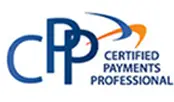Owning a business is a risky situation. Not only do you have to manage your own business finances, but you have to be aware of entering into risky business situations with customers who are credit risks. Bradstreet, a company that manages over 140 million credit records for businesses, says that business owners can take a more proactive approach to managing credit risks by being aware of some of the top risks.
Fraud
Business owners may be able to avoid becoming victim to a fraudulent business transaction by looking for four warning signs of fraudulent behavior. Overeagerness on the part of the client is the first warning sign. Be wary of a client who is willing to provide anything and everything you ask of them. The claim of a long period of time in business at one location, particularly if you have never heard of the company before or cannot verify their claim, can be another warning sign. A bigger-than-life business name may sound like a good bet until you find out that the company is a one-man show that opened only last year. Questionable references are another glaring warning sign. Make sure that you check the credit references of any business or customer that you’re extending credit to. Verify that the credit references are actual companies with whom the client has done business in the past.
Overlooking Existing Customer Accounts
You may think that if you’ve been doing business with a customer for a while that they are not a risk to you. According to about 80 percent of bad debt comes from existing client relationships with over a 12-month history. Monitor your customer accounts closely to check for any changes to the account that may indicate trouble. For example, if a client who has been paying on time for the last 10 months has not made a payment in three months, do not continue to extend credit to the client until the client has made good on the three months of past due invoices. Other changes in client situations you want to be on the lookout for include: lawsuits, liens or judgments against them; a change in number or a disconnected phone; business address change; and changes in ownership.
Not Utilizing Technology
Your business operates in the information age; you should use technology to make business processes easier. Automating your credit process is one way to quickly identify problems and issues as they arise. Many companies handle invoicing, credit checks and other financial matters manually, thinking that this helps them to identify problems easier, but by the time a human being recognizes that there is a problem, it may be too late. For example, if your invoicing system runs a monthly report and identifies accounts that are 90-days past due, you or an employee in your company can quickly go through the list and handle the accounts that fit this criteria rather than having the bookkeeper go through and manually identify accounts that are past due. Automated credit checks can also reduce the credit risk to your business by alerting you of changes in the credit records of your customers.




